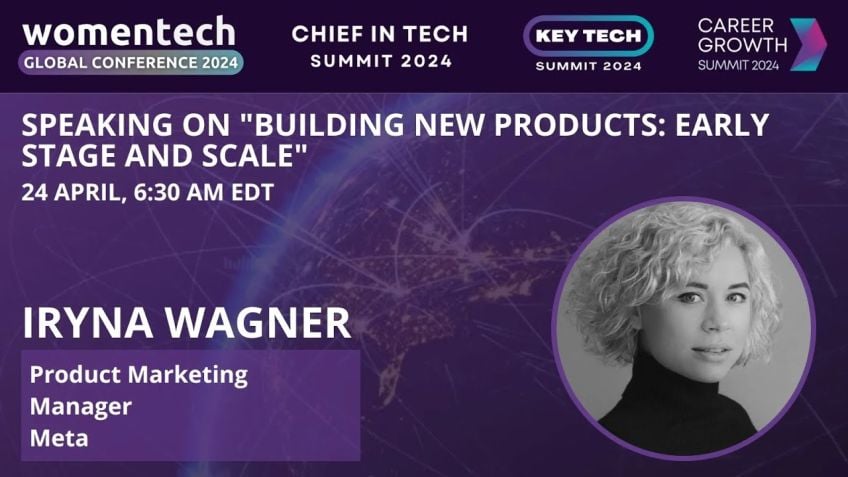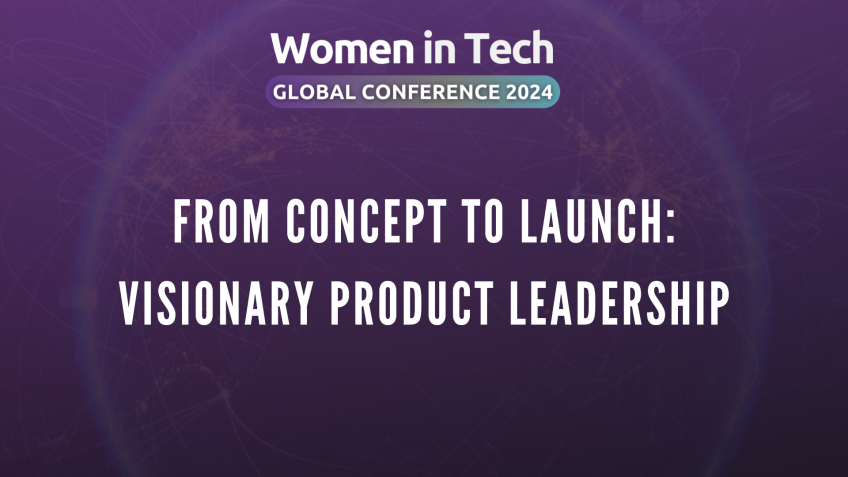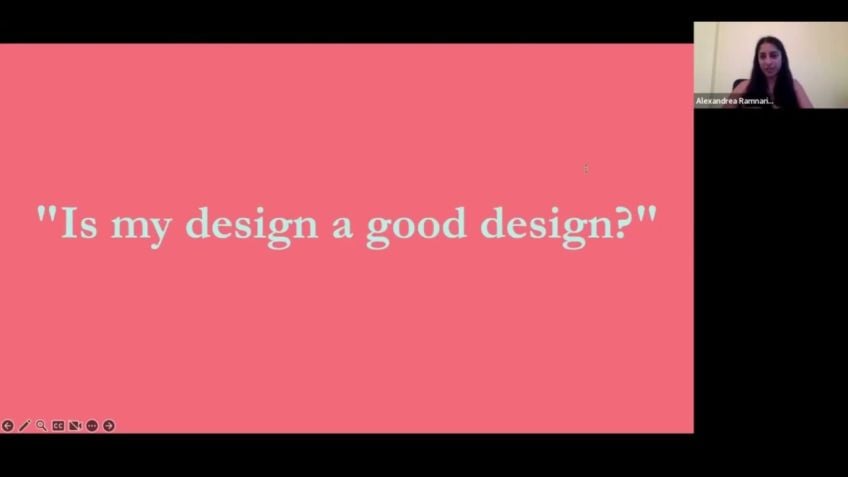Rachel Benyola - Exceptional Product Design for Non-TechniesApply to Speak
Product Development for Non-Technical Background: A Comprehensive Guide
As an inventor, with experience founding a successful startup, I would like to discuss the vital topics relevant to those aspiring to launch a product without classical technical backgrounds such as engineering or product design. Although my guidelines will benefit those working on hardware initiatives, the principles could be applied to software items as well.
Leveraging Non-Technical Expertise for Product Development
As a psychology graduate, I utilised my skills in the business and psychology world to create a revolutionary product: a foldable bike helmet. This novelty shifted people's perspectives on bike safety, demonstrating that one's technical aptitude is not the only key to developing a remarkable product.
Below we're going to unveil my unique model for product design and chat about why it is crucial.
Why is Product Design Important?
Excellent product design offers three main benefits:
- Differentiates your product from competitors.
- A well-designed product aligns with your customers needs, providing an excellent user experience.
- It reduces the time, effort, and resources required to launch a successful product.
Eight Factor Ideation Model for Product Development
My Eight Factor Ideation Model (FIM) has eight crucial components:
- Customers
- Market
- Competitors
- Research and Development
- Talent
- Technology
- Financing
- Suppliers
Let's break these factors down:
1. Customers
Start with your customers – they are key to developing a successful product. You can learn a lot by observing how they interact with your competitors. In addition to identifying their pain points, figure out what delights them. The better you know your customers, the more capable you will be in offering them solutions that truly fit their needs.
2. Market
You need to understand your product's market size and future demand. This information will guide your marketing campaign and ensure your product aligns with current trends.
3. Competitors
By examining your competitors, you gain insights into what potential areas could be improved or capitalized on. This will help you develop your product to further meet consumer needs.
4. Research and Development
Design and testing are a vital phase in crafting your product. You need to gather feedback from all stakeholders, including customers, engineers, marketers, and designers.
5. Talent
To ensure a product’s feasibility, involve manufacturers and designers who can offer insights during the development process. Make sure to thoroughly vet any potential collaborators to safeguard your product.
6. Technology
Investigate any materials or technology that may be relevant—take what’s available and leverage it for your product.
7. Financing
The fundraising process is complex and demanding. You can attract interested investors by participating in pitch competitions, presenting your product effectively, and showcasing your resolve to make it succeed.
8. Suppliers
Finally, find suppliers who align with your values and are willing to partner with you on your journey. This includes considering sustainable practices, manufacturing locations, batch sizing requirements and packaging suppliers. Don't be discouraged by suppliers who don’t believe in your vision or dismiss you.
My journey began by creating small batches of helmets in a small workshop. With persistence and resilience, you too can move from small beginnings to significant success. Embrace the journey, work with people who share your vision, and watch your product grow.
Video Transcription
Really what I want to talk about today are the, are the basically the basic things that you need to know as a product developer without any technical background.So really coming from, coming from anything other than engineering or product design or anything that sort of would prepare you to develop a product. And when I say that, I mean, usually a hardware physical product, although a lot of what I'm talking about today is going to also apply to a hardware uh product as well. Um So more or less anything that is outside of that traditional realm of technical tech development, that's what, that's what we're going to talk about today. So um the beginning really of starting Cova, which is, which is the start up that I had. Um And basically I developed a foldable bicycle helmet and that foldable bike helmet really transformed um how people thought about what biking and what safety really meant. And interestingly, my background's in psychology, it's not even in engineering. Um but I I utilized what my talents were in the psychology world and in the business world to, to develop an exceptional product. And so I I more or less went through that entire process of developing it from 0 to 100.
Um I wish I could share my screen with you guys. I don't, it worked the other day and now I'm like, not able to get in here. So, so basically I'll just have to go off of just talking to you guys. So this the goals that we have for the next few minutes are to understand and apply a product design method. And I'm gonna focus on the method that I developed called the eight fim method, which is the eight factor ideation model. And I'm gonna apply that, that, that model utilizing a case study, which is CO A co A is this foldable bike helmet that I invented. It started out from an initial idea of let's form some kind of plastic shell around a hard surface and figure out a way to make the helmet fold up because a lot of people don't wear bike helmets because they're super inconvenient and bulky. Um So I thought let's make a foldable helmet. Um I was inspired by a dear friend of mine who gone through a bike crash and she wasn't wearing her helmet and suffered permanent uh blindness in one eye from that injury. And that was something that inspired me to make this. And there's nothing on paper that really said that I should invent a foldable helmet, but I went for it anyway and learned so much. So what are, why is product design important?
Um There's three main things if it's done well, one, it's gonna differentiate you from your competitors. Uh Two, when you take the time to design products, you actually will meet customers needs. If you're doing it well. And thirdly when you learn those customers needs, you also are going to minimize the time and effort and money needed to make a viable product. So that's why it's very important to have some kind of factor. So right now, I want you all to write down a piece of paper, 88 bullets, one through eight and label them customers market com competitors research and development, manu manufacturing or actually talent towns, the fifth one, technology financing suppliers and yeah, that's everything. So that's all eight.
I'll say it one more time really quick. Um Customers market competitors research and development, talent, technology financing and suppliers. So we're gonna go through all eight. So the first one in terms of, you know, customers that's like where you got to start, right? So you want to look at this eight factor model and go through all eight of them. And that's what we're gonna do right now is think through each piece and they all play into each other. It's not necessarily that necessarily that one thing is much more important than the other. Although I will argue that the customer part is probably the most important. They all all eight factors play into each other and it's your job as the founder and inventor to sort of orchestrate this beautiful masterpiece. Um And there's just different parts to it to make it what it is. So with customers, you know, you don't necessarily even need a product today. If you wanna test out if your idea is like viable, you don't even need a product. What you really need is to observe intently how customers interact with your competitors products. So that's really sitting down and watching and taking a lot of notes and gathering a lot of data on how consumers are interacting with what's out there right now or what's not available to them and what are their major pain points also? What, what lights them up?
What makes them excited, really thinking about the, the mentality of your customer. I I, you know, you might think that you beat it, beat it like a dead horse to try to understand every little in and out of your customer, but why not, why not understand them at that deep level to really bring them um a product that's gonna help them. Um So getting deep into the mind of the consumer is super important. And so at first I thought with Cova oh Fold is like the obvious option, right to a bulky helmet that's going to get people to buy it. Well, I was actually wrong. Um We found that a lot of people when I did a a user focus group in my apartment. I invited a ton of cyclists and product designers and engineers into a room and got them talking. I actually found that fold ability wasn't the only huge pain point. It was actually the look of helmets, how they're bulky, the aesthetic. So that's when aesthetic became increasingly important as a factor to measure in terms of product viability. And then we built, um we actually built these amazing um customer profiles where we had the names of the customer and actually made it these personas describing their lifestyle, what they like to do based on the data we have gathered. So that's customers moving on to market.
You want to figure out the market size, what really is the demand? What's the size of the amount of customers? What's the projection of going forward? That's where you want to do a lot of digging online and research of where's the industry going that you're thinking of being involved in and really understanding that and that's going to come into play, especially when you're developing a marketing campaign of how you want to target people online.
And that's something that it is good to know upfront. Um So then if we go to competitors, um that's the next bullet, um you really want to try to gather as many of your competitors like data as you much of their data as you possibly can, not only the products and testing it out, but just any kind of information on what they're doing where they're going, you, your job is to know everything they're doing to factor in what isn't being addressed in the market.
What maybe isn't going well that competitors are providing, that I could do better um that I cannot painstakingly say enough. Um And so that is how I developed really, the first several iterations was based on what, what competitors were doing and what my consumers and customers said about the competitors products. Ok. So then let's go to research and development that's drawing up designs and iterating.
And you're gonna want to build that first prototype and get every stakeholder involved. And I mean, customers, engineers, marketers, designers all in one room to talk about what's going on and what their needs are because not only are we thinking about um product design, we're also thinking about manufacturability. So in that, when you're bringing on talent, make sure that you're bringing on manufacturers and designers that are gonna help you. And I don't necessarily think that's something you need immediately, but that's something that you will need um to really more or less that if your product is where it needs to be in terms of manufacturability, and I would highly suggest doing background checks on everybody that you get involved in having agreements in place and holding those people accountable just because you don't have that insane amount of experience.
Don't let people walk all over you like take that advice from me and value your own vision and mission. And then technology is really looking at what materials are available out there, vetting those um financing is really about um raising capital. So I did many pitch competitions and raise capital and worked with investors. Um in terms of suppliers, you really wanna vet are they, are they really here to build something from a sustainable standpoint? Like look at what your values are as a, as a founder, as an inventor and think. Ok, do I want to produce locally versus foreign? Do I want a company that's gonna service small batch manufacturing versus large manufacturing? Um Does it meet regulatory standards if that applies to your product? Um And then you're gonna want to think about who's gonna do the packaging, who's gonna provide all the material components, you know, both the core material components and then the aesthetic look um like the functionality and the fashion and those suppliers and manufacturers, you know, unfortunately, you know, because you're a small fish and maybe this is your first time.
They might like laugh at you that happened to me, you know, like kind of saying, oh, that's a cute idea you have, but you have to be persistent and look for pe and look for people that value and see the value in your vision. You don't want to work with people that are just gonna treat you like garbage because we all founders will say they've been there and those relationships do not go somewhere good. You want to work with partners that believe in you. And that might mean starting out really small, which is what I did is I started small and making really small batches of helmets in like a small wood shop. You know, it had, it has to start somewhere.





